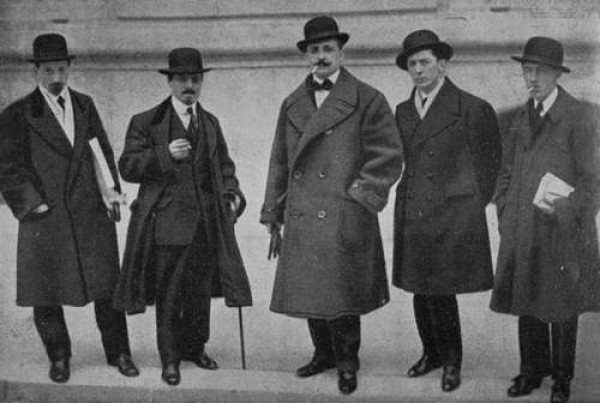
Controversial, iconoclastic and multifaceted, Futurism represents Italy’s most significant contribution to European Modernism. This year marks the 110th anniversary of the movement, which was founded on 20 February 1909 with the publication of Filippo Tommaso Marinetti’s manifesto on the front page of the Parisian newspaper Le Figaro. Marinetti’s vivid and dynamic article fired the imagination of a number of poets and visual artists, including Giacomo Balla, Umberto Boccioni, Carlo Carrà, Luigi Russolo and Gino Severini.
The Futurists believed that Italy’s great artistic heritage represented an obstacle to the development of a vibrant and innovative modern culture. They argued that the only sure means of injecting new life into the country’s somewhat provincial artistic climate was to focus on the modern world as a source of inspiration, maintaining that since the urban environment and the machine offered entirely new sensations, the artist would be required to develop equally novel means of expression to capture them. It was their conviction that “there can be no modern painting without the starting point of an absolutely modern sensation”.

Umberto Boccioni, Study for "The City Rises", 1910, Estorick Collection, London
Unlike earlier avant-garde tendencies such as Impressionism, Fauvism or Cubism, Futurism was a self-proclaimed movement that aimed at the complete renewal of artistic expression in every creative sphere. The concept of a ‘Futurist reconstruction of the universe’ led to its intervention in almost every area of human activity: from dancing to interior design, from photography to fashion and even cuisine. In fact, Futurist theory extended to embrace politics, and its extreme nationalism made it sympathetic toward Benito Mussolini’s Fascism.

Futurist Manifestos
It remains a popular misconception that Futurism did not survive the First World War. In fact, during the interwar period it developed into a mass movement with distinct regional groupings and characteristics. A new generation of painters, sculptors, poets and musicians rallied to Marinetti’s cause, producing works that continued to explore Futurism’s key preoccupations, but which were also attuned to wider European trends such as Purism and Surrealism. During the 1920s, Futurist ‘mechanical art’ evoked the essence of the machine through an abstract vocabulary of precise and brightly-coloured geometric forms, whilst a fascination with the dramatic, dizzying perspectives offered by flight defined the imagery of the following decade. This new genre of ‘aeropainting’ continued to be the dominant trend in Futurist art into the early 1940s, with an increasingly political and militaristic edge. The movement finally lost momentum with the death of Marinetti in 1944.
The Estorick Collection is internationally known for its Futurist paintings and drawings.
Click here to discover our Futurist collection.